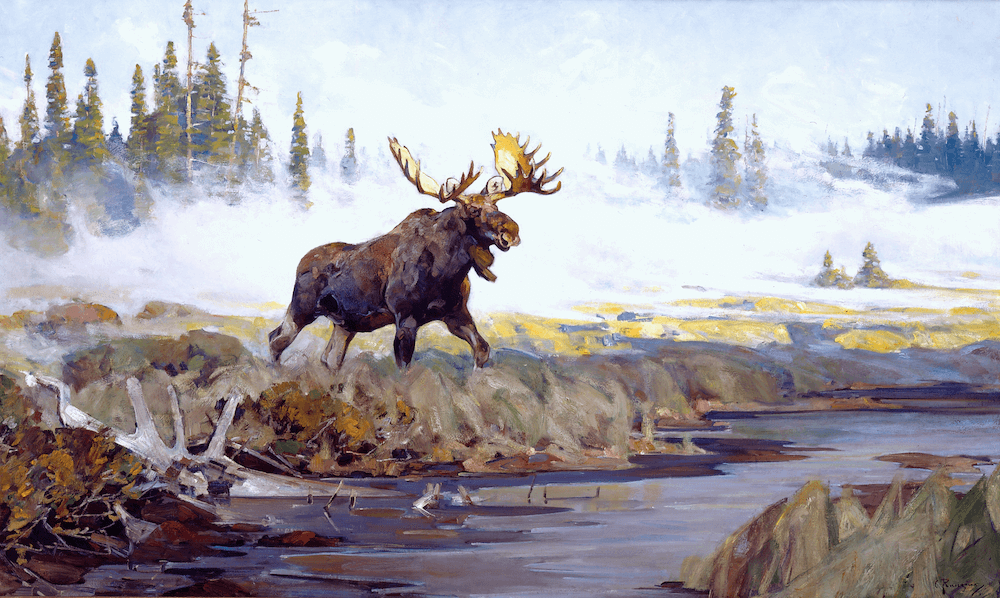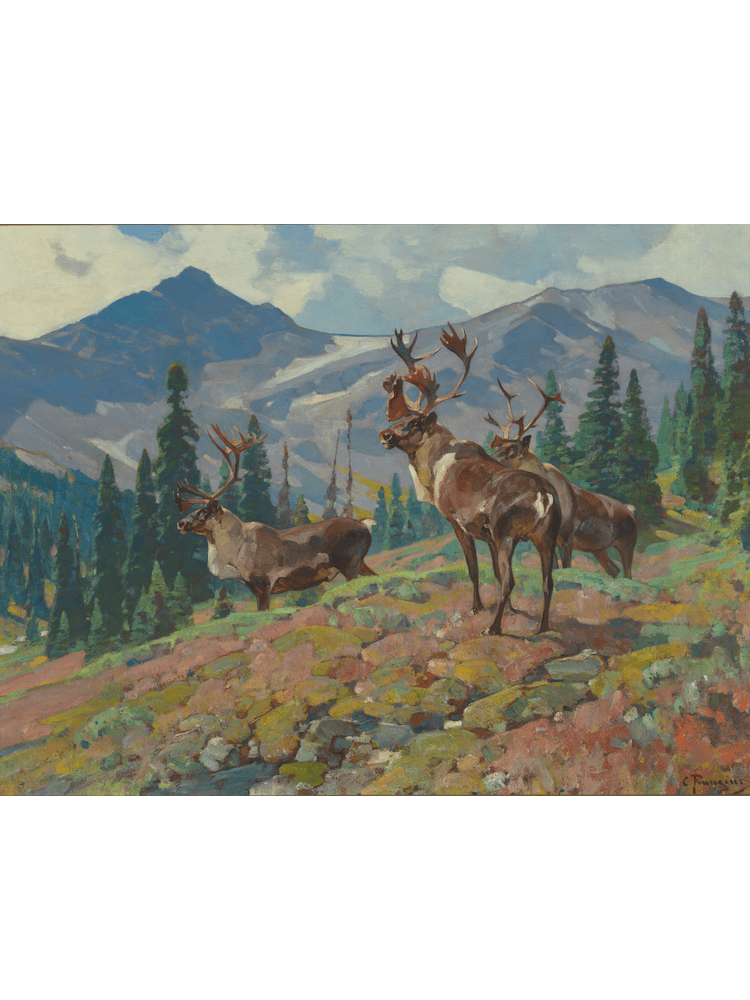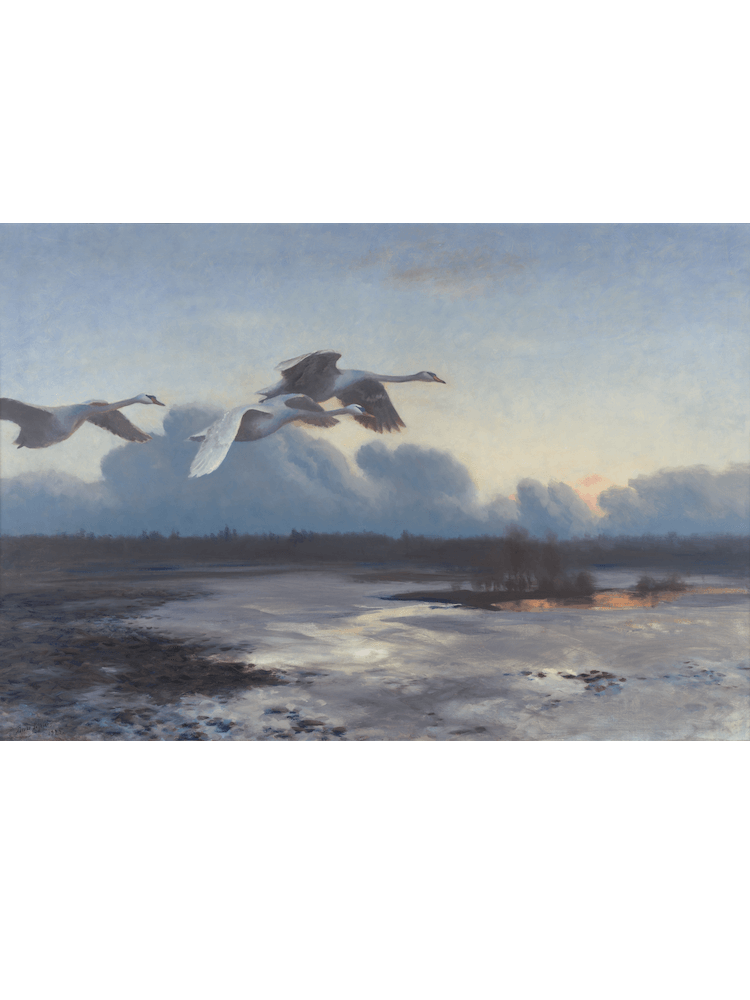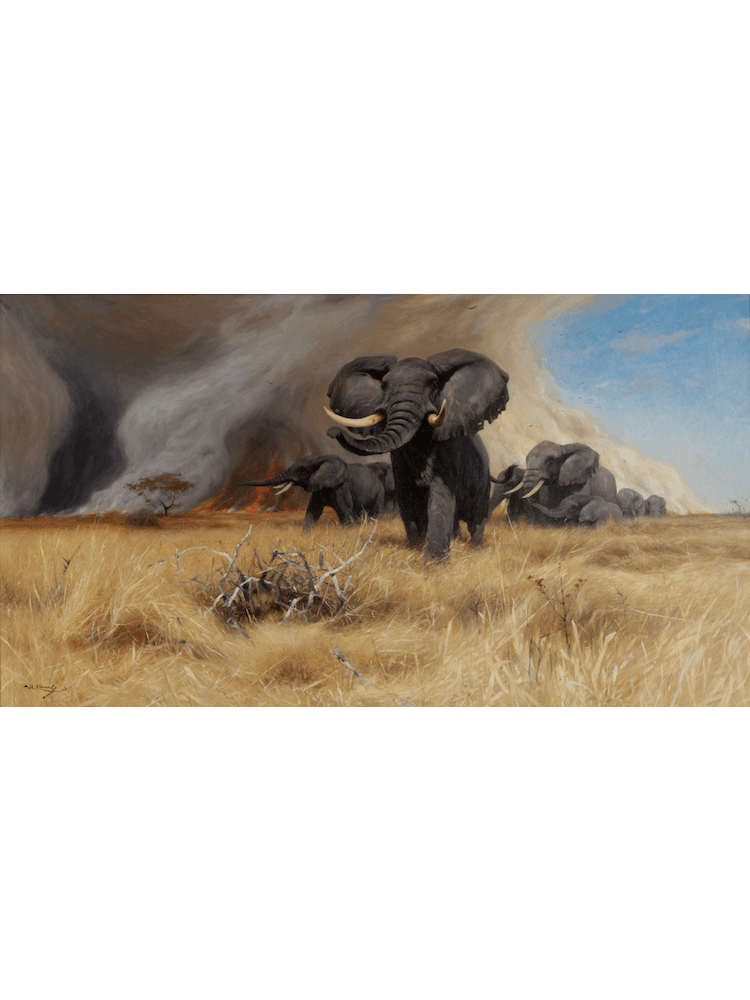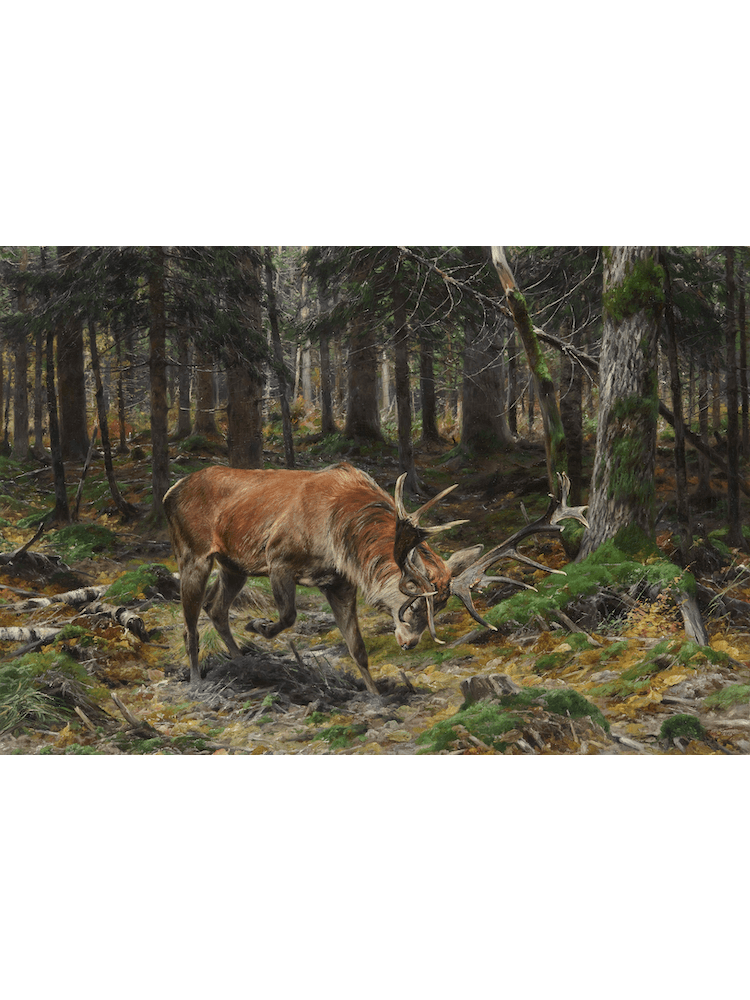Journey into the vast wilderness and explore 45 masterworks from four influential wildlife painters, known today as the “Big Four.” Survival of the Fittest features the paintings of German-American Carl Rungius (1869-1959), German Wilhelm Kuhnert (1865-1926), Swede Bruno Liljefors (1860-1939), and German Richard Friese (1854-1918).
In the late 1800s, an emerging conservation movement, influenced by Charles Darwin’s theories and often in collaboration with affluent hunters, aimed to preserve remaining wildlife populations. These developments influenced the Big Four, who began depicting animals in their natural environments, departing from previous portrayals of animals as characters in fables and biblical narratives or as anatomical subjects in natural history illustrations. Each of the four artists worked in different parts of the world. Still, they all shared a common intention: to present a vision of wildlife that valued the animal, its behavior, and its natural environment.
This stunning exhibition captivates viewers with awe-inspiring large-scale works depicting the beauty of nature and encourages visitors to contemplate their own relationship with the natural world.

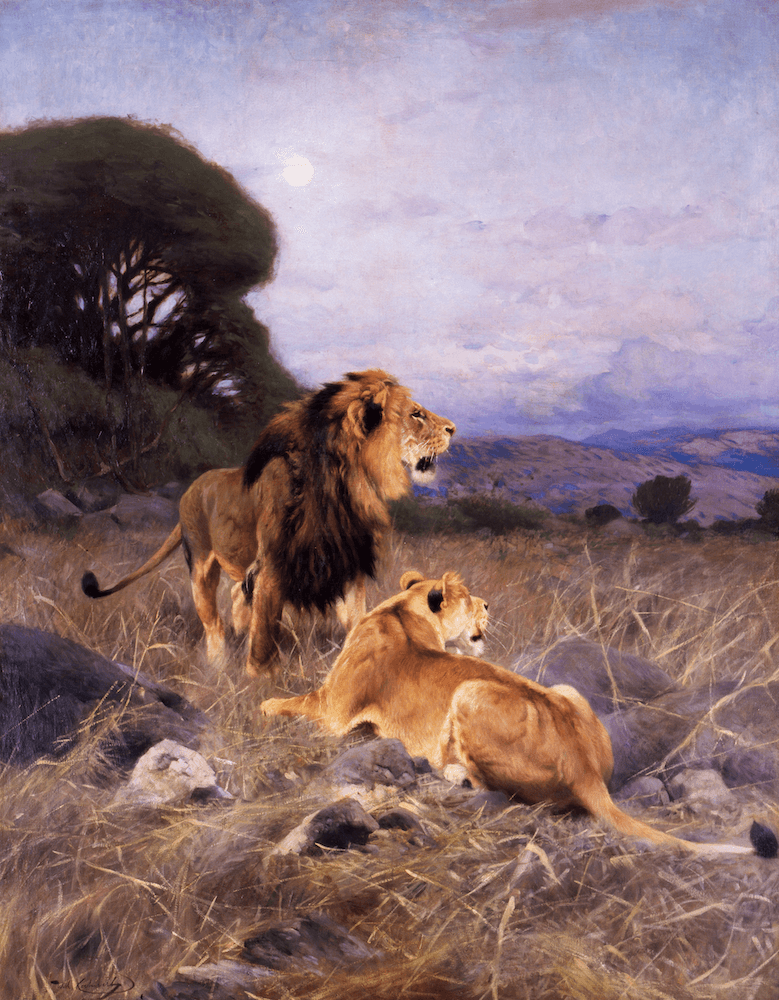
Survival of the Fittest: Envisioning Wildlife and Wilderness with the Big Four, Masterworks from the Rijksmuseum Twenthe and the National Museum of Wildlife Art is curated by Adam Duncan Harris, Grainger/Kerr Director of the Carl Rungius Catalogue Raisonné and organized by the National Museum of Wildlife Art.
Thanks to the members, donors, grantors, and sponsors who support exhibitions and programs. Exhibitions and programs are supported in part by a grant from the Wisconsin Arts Board with funds from the State of Wisconsin and the National Endowment for the Arts, and other sponsors. Marketing is supported in part by City of Wausau Room Tax funds.
